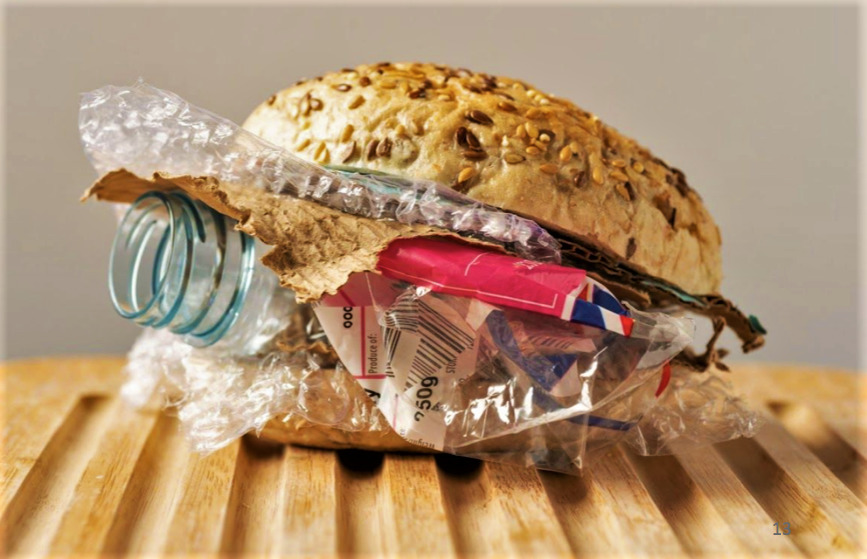
Support EcoJustice Radio with a Tax-Deductible Donation
Subscribe to EcoJustice Radio: Apple Podcasts | SoundCloud | Google | Spotify | Stitcher | YouTube | Links
Julia Varshavsky speaks on health dangers from plastics.
Plastic is ubiquitous in our daily lives, even if we try to avoid it, it is always there. It’s in our clothing, our body products including makeup, soaps, and conditioners. All of our electronics including phones and computers. Plastics make up 85% of medical equipment. IV bags and tubing alone constitute up to 25% of hospital waste. In food packaging, it helps retain freshness, so we have less food waste. It protects us when driving or traveling by mass transit. Building materials can include carpet, paint, flooring, blinds, window coverings. The list is not short. Plastic is omnipresent.
It seems almost impossible to live a life free of plastic. We can try to minimize it in our environment and what we bring into our daily lives, yet nevertheless plastic appear in some manner shape or form. Detectable levels of endocrine disrupting plastic additive, BPA has been found in the urine of 95% of adults in the United States. Should we not expect that such a miracle product would be safe to use. That when it degrades it will not make its way into our water systems or our bodies? It is the responsibility of corporations to ensure a healthy and safe usage of their product be it at time of production, use, and disposal. Environmental exposure to plastic-related chemical compounds does not occur in isolation but as a “cocktail effect,” with unknown cumulative impacts.
Our guests include Yvette Arellano, Policy Research & Grassroots Advocate for TEJAS, Dr. Julia Varshavsky, Reproductive Health and the Environment, UCSF Medical Center, and Bill Walsh, Healthy Building Network
STORY: Break Free From The Plastic Death Cycle
Yvette Arellano, is a community organizer for TEJAS, Texas Environmental Justice Advocacy Services. She focuses on the human health impacts of petrochemicals involved in plastics production, chemical clusters, risk of accidents and access to information in the 52-mile industrial corridor between Houston and Galveston.
Dr. Julia Varshavsky is a Postdoctoral Scholar in environmental epidemiology and biostatistics for the Research team, conducting biologically-based, population-level studies on exposure and health risks associated with endocrine disrupting chemicals (EDCs).
Bill Walsh, has been working on issues related to plastics and environmental justice for more than 35 years. He founded the Healthy Building Network in 2000 to be the green building movement’s leader in product transparency, healthy materials and related issues of health equity and environmental justice. Prior to that he spent 15 years with Greenpeace USA.
Hosted by Jessica Aldridge from SoCal 350 and Adventures in Waste
Engineer: Blake Lampkin
Executive Producer: Jack Eidt
Producer: Georgia Tunioli
Show Created by Mark and JP Morris
Music: Javier Kadry
Episode 59
Photo Credit: Julia Varshavsky
Updated 27 August 2021










Pingback: REFINEMENT: Cracking the Plastic Production Boom – Plastic Plague Pt 2 | WilderUtopia.com
Pingback: THROWAWAY SOCIETY: Economics & Inequity of (Plastic) Consumption – Plastic Plague Pt 4 | WilderUtopia.com
Pingback: THE BOTTLE SCAM: Land, Water, and Indigenous Rights – Plastic Plague Pt. 5 | WilderUtopia.com
Pingback: THE PARADIGM SHIFT: Reduction, Recycling, & Technology – Plastic Plague Pt. 6 | WilderUtopia.com
Pingback: EXTRACTION: Fracking and Drilling for Plastic Dreams – Plastic Plague Pt 1 | WilderUtopia.com
Pingback: THE FUTURE: Solutions, Policy, & Resistance Around Plastic – Plastic Plague Pt 7 | WilderUtopia.com
Pingback: Break Free From The Plastic Death Cycle
Pingback: Microplastics Are Everywhere: What’s The Risk?